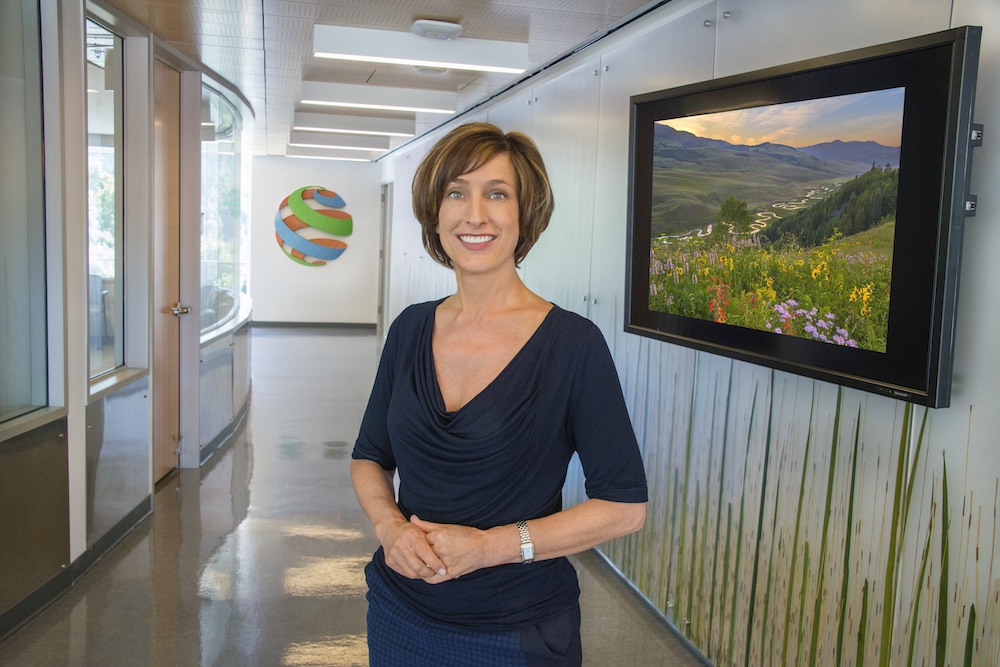
(Credit: Roy Kaltschmidt/Berkeley Lab)
Susan Hubbard, the Associate Laboratory Director of Lawrence Berkeley National Laboratory’s (Berkeley Lab’s) Earth and Environmental Sciences Area, has been elected to the National Academy of Engineering (NAE) for her significant contributions to hydrogeophysics and biogeophysics, and to the geophysics of permafrost.
Hubbard is among 86 other new U.S. members and 18 new international members joining the NAE in the 2020 class. Election to the National Academy of Engineering is among the highest professional distinctions accorded to an engineer. Academy membership honors those who have made outstanding contributions to “engineering research, practice, or education, including, where appropriate, significant contributions to the engineering literature” and to “the pioneering of new and developing fields of technology, making major advancements in traditional fields of engineering, or developing/ implementing innovative approaches to engineering education.”
Hubbard’s research focuses on quantifying how terrestrial ecosystems function, with a particular emphasis on developing approaches to study how hydrological, geochemical, and biological processes interact and influence water availability, water quality, carbon cycling, agriculture, and subsurface dynamics. She is engaged with large-scale Department of Energy projects aimed at quantifying how mountainous watersheds respond to a changing environment, and the associated implications for future water resources, as well as investigating if warming permafrost-rich regions will remain significant carbon sinks in the coming decades.
Hubbard joined Berkeley Lab in 1998, after completing her Ph.D. in civil and environmental engineering at UC Berkeley. She served as a Program Lead, Deputy Director, and then Director of the Earth Sciences Division before being named the founding Associate Lab Director for the Earth and Environmental Sciences Area (EESA) of Berkeley Lab in 2015. Research within this Area – which includes a broad portfolio of climate science, terrestrial ecosystem science, environmental and biological system science, fundamental geoscience, and energy geosciences – is tackling some of today’s most pressing environmental and subsurface energy challenges. Hubbard is also an adjunct professor of Environmental Science, Policy and Management at UC Berkeley Prior to joining Berkeley Lab, Hubbard earned her B.S. in geology at UC Santa Barbara, an M.S. in geophysics at Virginia Tech, and worked as a geologist at the U.S. Geological Survey and a geophysicist in industry.
Hubbard has been recognized as a Fellow of the American Academy of Arts and Sciences, a Fellow of the American Geophysical Union, and a Fellow of the Geological Society of America. She has also received numerous other recognitions and has served on several editorial boards and advisory boards, including the DOE Biological and Environmental Research Advisory Committee and the California Council on Science and Technology.
With her election, Hubbard joins Earth and Environmental Sciences colleagues Bob Butnitz, Karsten Pruess, and joint EESA-UC Berkeley Faculty Scientist Lisa Alvarez-Cohen, who were previously inducted into the Academy.
# # #
Founded in 1931 on the belief that the biggest scientific challenges are best addressed by teams, Lawrence Berkeley National Laboratory and its scientists have been recognized with 13 Nobel Prizes. Today, Berkeley Lab researchers develop sustainable energy and environmental solutions, create useful new materials, advance the frontiers of computing, and probe the mysteries of life, matter, and the universe. Scientists from around the world rely on the Lab’s facilities for their own discovery science. Berkeley Lab is a multiprogram national laboratory, managed by the University of California for the U.S. Department of Energy’s Office of Science.
DOE’s Office of Science is the single largest supporter of basic research in the physical sciences in the United States, and is working to address some of the most pressing challenges of our time. For more information, please visit energy.gov/science.
